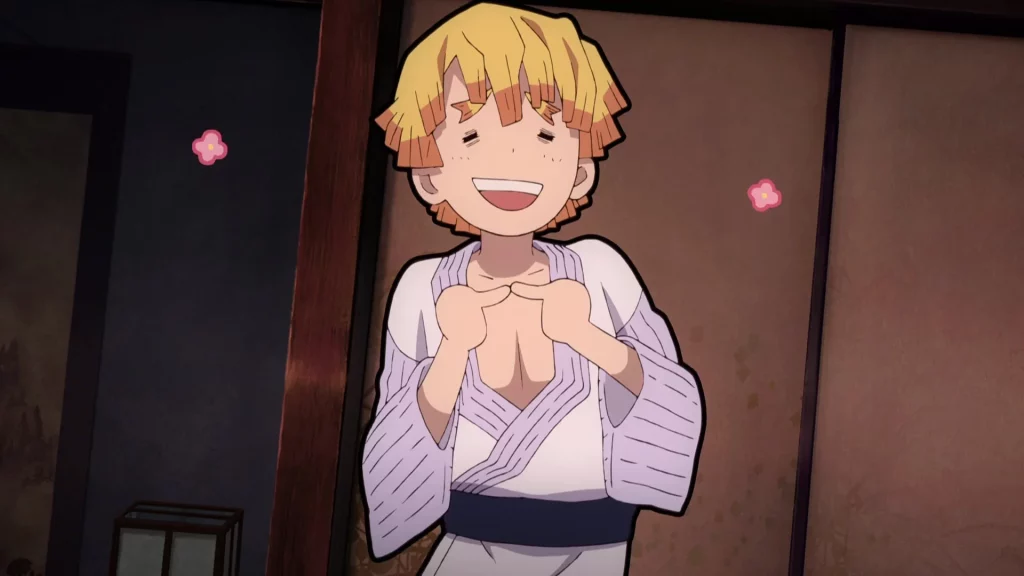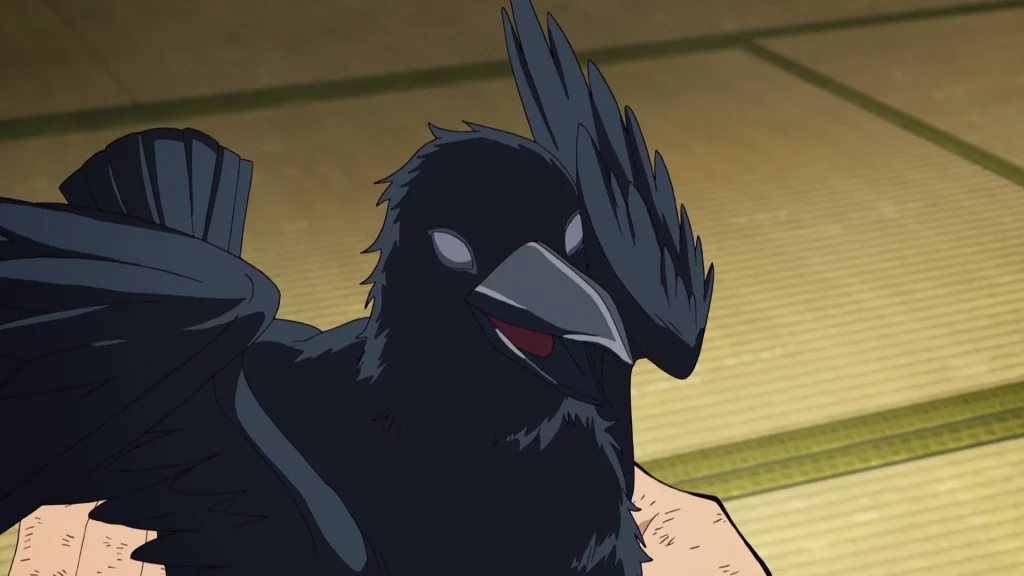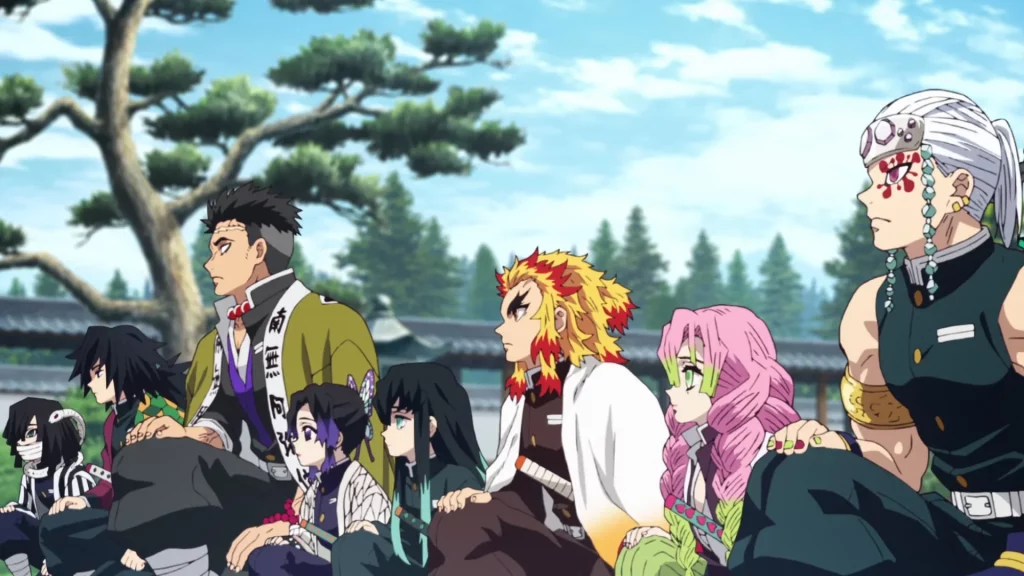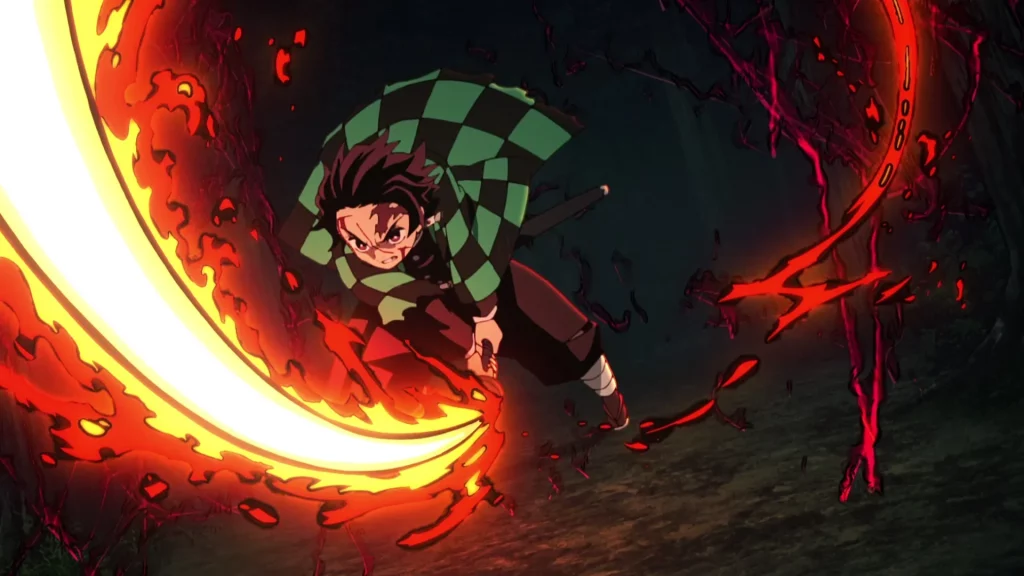Welcome to the thrilling world of ‘Demon Slayer‘, where slicing demons is a full-time job and our heroes never take a day off — except maybe for laundry day. This epic anime series has captured hearts with its blend of breathtaking action, deep-rooted emotions, and hairdos that defy gravity and logic.
In this list of mind-blowing facts, we’ll dive into the nitty-gritty of what makes ‘Demon Slayer’ a cut above the rest. Did you know that Tanjiro’s earrings are more than just a fashion statement? Or that Nezuko can probably win a ‘most adorable demon’ contest, hands down?
Buckle up as we embark on a journey filled with as many twists and turns as Zenitsu’s love life. Are you ready to uncover the secrets that even Muzan Kibutsuji might not know?
The bond between Nezuko and me can’t be severed by anyone!
Tanjiro Kamado
Demon Slayer Facts
Before you dive into the fascinating world of ‘Demon Slayer‘, take note: your knowledge will be put to the test! At the end of this article, a quiz awaits to challenge even the most dedicated fans. Read carefully and arm yourself with facts to prove your expertise.
- Demon Slayer, known in Japan as Kimetsu no Yaiba, was created by Koyoharu Gotouge.
- The manga began serialization in Weekly Shōnen Jump in February 2016.
- Tanjirou Kamado, the main character, embarks on a journey to cure his sister Nezuko, who turns into a demon.
- Nezuko, unique among demons, retains human emotions and consciousness.
- The “Nichirin Swords” used by Demon Slayers are made from a special ore that constantly absorbs sunlight.
- Hashira, the elite demon slayers, are the highest-ranking fighters in the Demon Slayer Corps.
- Each Hashira specializes in a distinct breathing style, a form of swordsmanship.
- The series is set during the Taisho Era in Japan (1912-1926).
- Muzan Kibutsuji, the primary antagonist, is the first and most powerful demon.
- “Demon Slayer: Kimetsu no Yaiba – The Movie: Mugen Train” became Japan’s highest-grossing film.
- The breathing styles are inspired by actual martial arts forms and Japanese dance movements.
- Gotouge has a penchant for Japanese history and folklore, influencing the series’ themes.
- The demons’ designs and abilities are often based on Japanese mythology and horror stories.

- Inosuke Hashibira, known for his boar head mask, was raised by boars.
- Zenitsu Agatsuma, often seen as cowardly, becomes incredibly powerful when asleep.
- The series’ anime adaptation was done by Ufotable, a studio known for its high-quality animation.
- “Gurenge” by LiSA, the anime’s opening theme, broke several music records in Japan.
- The Infinity Train Arc is unique for being both a film and part of the anime series.
- Akaza, a powerful demon, practices a martial art known as Soryu style.
- Yoriichi Tsugikuni, a legendary demon slayer, is known for his distinctive hanafuda earrings.
- The series has been praised for its emotional depth and exploration of the themes of family and grief.
- Tengen Uzui, the Sound Hashira, was born into a family of ninja.
- Full color versions of the manga chapters were released, enhancing its visual appeal.
- Nezuko is the first demon shown to be able to walk in sunlight without harm.
- The wisteria flower plays a significant role, as its scent repels demons.
- Kyojuro Rengoku’s character design and personality are inspired by the concept of fire.
- Mitsuri Kanroji, the Love Hashira, has a unique whip-like sword due to her flexible muscle composition.
- Demons in the series can only be killed by decapitation with a Nichirin Blade or exposure to sunlight.

- Giyu Tomioka, the Water Hashira, was the first Hashira introduced in the series.
- The series has inspired numerous spin-offs and light novels.
- Shinobu Kocho, the insect Hashira, uses poison in her fighting technique to compensate for her lack of physical strength.
- The Demon Slayer Corps operates covertly, unknown to most of the society in its setting.
- Koyoharu Gotouge often includes comedic panels in the manga to lighten its dark themes.
- The character designs and their development throughout the series have been widely praised.
- “Demon Slayer” has a significant fan base, leading to a substantial increase in tourism to its real-world settings.
- The series has been adapted into video games, further expanding its reach.
- Sanemi Shinazugawa, the Wind Hashira, has a volatile personality and a tragic backstory.
- Manga sales skyrocketed after the anime adaptation, breaking several sales records.

- Each demon has a unique Blood Demon Art, which grants them special powers.
- The soundtrack of the anime has been critically acclaimed for its impact and quality.
- Urokodaki, Tanjirou’s teacher, wears a tengu mask and is a former Water Hashira.
- Hand signs used in breathing techniques are based on the traditional Buddhist mudras.
- Gotouge’s art style evolved significantly over the course of the manga’s run.
- Muzan’s appearance is inspired by the Gothic style and vampire mythos.
- The series’ portrayal of perseverance and courage in the face of adversity has been a key factor in its popularity.
- Muichiro Tokito, the Mist Hashira, is the youngest of the Hashira and a prodigy.
- The theme of sun and moon is recurrent throughout the series, symbolizing various dichotomies.
- “Demon Slayer” has significantly influenced anime and manga culture globally.
- The complexity and depth of the series’ antagonists add to its narrative strength.
- A stage play adaptation of “Demon Slayer” was produced, showcasing its cultural impact.
Demon Slayer Myths

Having explored these fun facts about ‘Demon Slayer,’ let’s now dive into distinguishing myth from reality. Do you know the reality behind some common myths? Let’s find out.
- Tanjiro’s Scar is a Birthmark
The scar on Tanjiro’s forehead, often believed to be a birthmark, is actually not. It’s been revealed that this mark was the result of an injury he sustained while protecting his younger brother. As the story progresses, the scar evolves, reflecting his growth and experiences as a demon slayer. - Nezuko Retains Her Human Consciousness Completely
While Nezuko does show remarkable control for a demon, it’s not entirely accurate to say she retains full human consciousness. Her transformation into a demon has altered her memories and personality to some extent. Her human-like behavior is attributed more to the influence of her brother and her own willpower. - All Demon Slayers Have Supernatural Abilities
Contrary to popular belief, not all demon slayers possess supernatural abilities. Their exceptional swordsmanship and combat skills are often the result of rigorous training and discipline. Techniques like Total Concentration Breathing enhance their physical abilities, but they are not inherently supernatural. - Demons in Demon Slayer are Evil by Nature
It’s a common misconception that all demons are inherently evil. Many demons were once humans and retain fragments of their human emotions and memories. Their malevolent behavior is largely influenced by demon transformation and the control exerted by stronger demons like Muzan Kibutsuji. - The Series is Only About Fighting Demons
While demon slaying is a central theme, the series delves much deeper. It explores complex themes like the nature of humanity, the impact of loss and grief, and the bonds of family and friendship.
No products found.
Demon Slayer Quotes

Like many anime series, Demon Slayer has a great collection of quotes. Below, you will find my favorites. Let me know yours in the comments so I can add them to the list.
I’ll fulfill my duty! I won’t allow anyone to die!
Kanao Tsuyuri
Kanao Tsuyuri, a skilled and determined Demon Slayer, expresses her unwavering commitment to protect others and fulfill her duties as a Demon Slayer, highlighting her strong sense of responsibility.
I will not yield to the likes of you, demon!
Giyu Tomioka
Giyu Tomioka, a stoic and powerful Water Hashira, asserts his resolve and refusal to succumb to demons, reflecting his dedication to his role as a Demon Slayer and his moral fortitude.
You’ve become a fine Demon Slayer, there’s no doubt about that.
Sakonji Urokodaki
Sakonji Urokodaki, the mentor of Tanjiro and a former Water Hashira, acknowledges Tanjiro’s growth and skill as a Demon Slayer, illustrating his pride and recognition of Tanjiro’s hard work and development.
All I’m doing is driving away those who’ve lost their hearts.
Shinobu Kocho
Shinobu Kocho, the Insect Hashira known for her calm yet deadly demeanor, reflects on her role as a Demon Slayer, suggesting a deeper understanding and perspective on her mission to eliminate demons.
No matter how many people you may lose, you have no choice but to go on living.
Muzan Kibutsuji
Muzan Kibutsuji, the primary antagonist and the first demon of “Demon Slayer,” delivers a cold reality about loss and the inexorable nature of life, emphasizing his nihilistic and ruthless worldview.
Demon Slayer FAQ

Having explored all these quotes, now it’s time to focus on the FAQs. This section is really important for the quiz that follows, so read carefully.
- Why is “Demon Slayer” considered one of the best anime?
“Demon Slayer” is often hailed as one of the best anime due to its compelling storyline, dynamic characters, and exceptional animation quality. The anime uniquely blends traditional Japanese culture and folklore with a modern narrative style. The emotional depth of the characters, combined with intense action scenes and stunning visuals, makes it a standout in the anime world. - Where does “Demon Slayer” take place?
It is set in Taisho-era Japan, which lasted from 1912 to 1926. This historical setting is crucial as it blends elements of traditional Japanese culture and aesthetics with the early signs of modernization. The story takes the characters across various Japanese landscapes, from remote mountain villages to bustling cities, all beautifully depicted to reflect the era’s unique ambiance. - Are the breathing techniques in “Demon Slayer” real?
The breathing techniques known as “Breath Styles,” are fictional and part of the anime’s fantastical elements. They are inspired by real-life breathing techniques used in martial arts for focus and control but are greatly exaggerated for dramatic effect. In the series, these techniques grant the characters superhuman abilities, which, while fascinating, are not possible in real life. - What is the main theme of “Demon Slayer”?
The main theme revolves around the battle between good and evil, the resilience of the human spirit, and the importance of family and bonds. The protagonist, Tanjiro Kamado, embarks on a journey to save his sister and avenge his family, showcasing themes of perseverance, compassion, and the struggle to retain one’s humanity in the face of monstrous adversities. - How does “Demon Slayer” incorporate Japanese folklore?
It heavily incorporates elements of Japanese folklore, particularly in its depiction of demons and various supernatural occurrences. Many of the demons in the series are inspired by Yokai and other mythical creatures from Japanese folklore. The series also reflects Shinto and Buddhist beliefs, evident in the characters’ spiritual practices and the moral and ethical dilemmas they face.
No products found.
Demon Slayer Quiz

Welcome to the Demon Slayer Quiz! Remember, if you don’t get any questions right, a demon might just sneak up on your next cup of tea!
Conclusion
As we conclude our journey, it’s clear that this series is more than just entertainment; it’s a source of inspiration. The characters’ battles against daunting odds remind us of our own capacity to overcome challenges.
This isn’t just a story; it’s a call to embrace our inner strength and face our fears with determination. As we leave the world of “Demon Slayer” behind, let’s step forward into our lives with the same bravery and resolve.
As always, let’s finish our article with a funny question: If you had to pick a character from the series to help you on a tough math test, who would it be and why? Let me know in the comments.
6 Sources Used For This ArticleWho is Kanao Tsuyuri in Demon Slayer – Kawai In Friends
Demon Slayer Manga: A Thrilling Tale – Explained This
Jujutsu Kaisen Vs. Demon Slayer – Fiction Horizon
Demon Slayer – Fandom
Why the ‘Demon Slayer’ movie is a unique anime success – La Times


